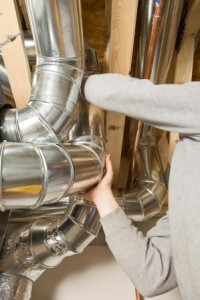 An efficient heat pump or A/C is certainly the heart of your Tampa home’s central HVAC system, home comfort and efficiency, but the ducts are the lungs of the home. To enjoy maximum comfort and low energy bills, the ducts must be designed well and kept in good condition. Were your ducts designed for energy efficiency? Read on to learn what that entails.
An efficient heat pump or A/C is certainly the heart of your Tampa home’s central HVAC system, home comfort and efficiency, but the ducts are the lungs of the home. To enjoy maximum comfort and low energy bills, the ducts must be designed well and kept in good condition. Were your ducts designed for energy efficiency? Read on to learn what that entails.
Use Approved Duct Materials
One of the shortcuts unscrupulous or inexperienced installers employ is using building cavities as air ducts. The practice was more common in older homes, but it is unacceptable and contributes to poor indoor air quality and energy losses. Ducts should be fabricated from approved materials, such as sheet metal, fiberglass and flex ducts.
Fine-Tune Airflow
Balanced air distribution is one of the goals of good duct design. Make sure your HVAC technician installs manual duct dampers near the trunk and branch connections to each branch. You may make precision airflow adjustments to each room with dampers. Or, consider a zoning system that uses automatic duct dampers and multiple thermostats for complete comfort control.
Balance Supply and Return Airflow
Supply ducts and return ducts should move the same volume of air to equalize air pressure in the home and HVAC system. For the best results, install a return grille in each room with a supply register. Transfer grilles and jumper ducts may also be used.
Seal Ductwork
Duct sealing materials should be HVAC-industry approved and impermeable. Mechanical sealing is performed with sheet metal screws, compression straps and collars. Tiny holes and gaps are sealed with mastic paste and heat-resistant tape. Duct seals should be tested to measure leakage and integrity.
To learn more about heating and cooling ducts designed for energy efficiency, contact Senica Air Conditioning, Inc., Inc. at 866-881-5935.
Image Provided by Shutterstock.com



